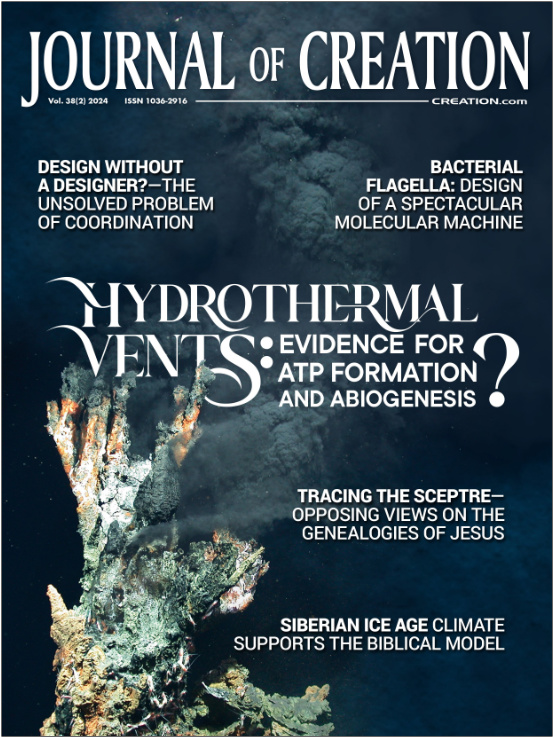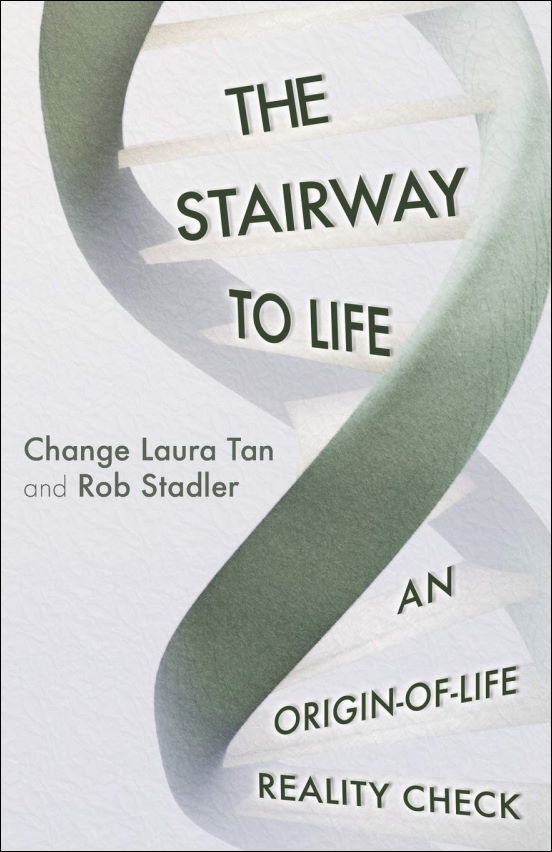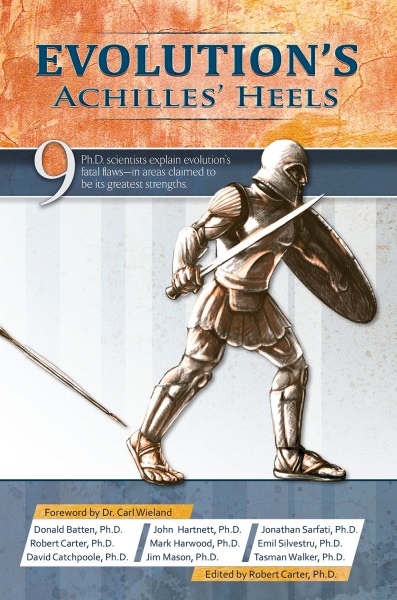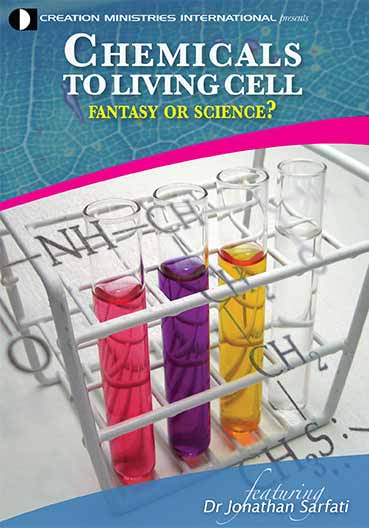Journal of Creation 38(2):7–11, August 2024
Browse our latest digital issue Subscribe
Contamination of meteorite samples with terrestrial amino acids
Meteorites, the source of most extraterrestrial material, are believed to have provided a wide variety of proteinogenic amino acids (AA) according to Origin of Life researchers. The chemicals identified from fragments are listed, but, until recently, little or no effort has been dedicated to quantifying how much was due to terrestrial contamination, although contamination is considered to be inevitable.
In 2021, Glavin et al. analyzed three fragments from the Aguas Zarcas meteorite, which landed in Costa Rica in 2019 (UA samples, from the University of Arizona).1 In addition, 10 g were extracted and ground to a powder from a single fragment of the Murchison meteorite, which had landed in Australia in 1969; individual portions (0.08 g and 1.0 g) were analyzed separately. The results, shown in table 1, provided insights about contamination from soil but not from collection, storage, and/or handling of the samples.
1 Flame-sealed in a glass ampoule with water and extracted at 100°C for 24 h
2 Hydrolysis using 6 M HCl at 150°C for 3 h
3 Acid-hydrolysis under HCl vapour
4 Unpublished analysis of soil 20–30 cm underground using LC-FD (high performance liquid chromatography with fluorescence detection) by Reid R. Keays from The University of Melbourne. Further details not provided.
As a rule, much or most AA identified in meteorites were not present as such but created through hydrolysis of carboxylic acid amides, hydroxy acid amides, lactams, carboxylactams, N-acetylamino acids, substituted hydantoins, and other chemicals from the meteorites.1
The laboratory processes of grinding the samples to a powder followed by high-temperature extraction with very acidic water would not have occurred naturally, but presumably hydrolysis may have occurred given enough time.
The data in table 1 often shows considerable variation for the same AA across the samples. Therefore, we combined the L- and D-enantiomer concentrations to facilitate a comparison of relative concentrations, leading to the data shown in table 2.
The data in table 2 suggested to us a correlation between [proteinogenic AA] from soil and the fragments. We focused on the Aguas Zarcas data, since all the analyses had been performed by the same team and under very similar conditions. [AA]soil vs average [AA]meteorite for all cases where [AA]soil > [AA]meteorite was plotted as shown in figure 1. A convincing correlation was found (R2 = 0.81). Noteworthy from the regression equation is that the Y-intercept ≈ 0; i.e., when AAs were absent in the soil, almost none would have been found in the meteorite sample! This suggested that very little AA would have been indigenous to the meteorite.
Glycine, threonine, alanine and 2-amino-3-methylbutanoic acid were fairly distant from the correlation line but also had more than a 10-fold discrepancy in [AA] across the three samples.
The correlation might improve considerably if the average of several soil samples could be used, all adjacent to the meteorite fragment analyzed.
According to the data in table 2, the soil sample from the Murchison site contained about 33% more proteinogenic AA than the soil from the Aquas Zarcas site, whereas, on average, the Aquas Zargaes meteorite fragments contained >3 times more proteinogenic AA. Also noteworthy is that the two Murchison aliquots contained about the same total concentration of proteinogenic AA (62 vs 62.9 nmol/g), whereas for the Aguas Zarcas, they ranged from 60–367 nmol/g (columns 2, 4, and 6).
Major contamination could explain these observations: Aquas Zarcas in Costa Rica is a very humid region (unlike Murchison, Australia); much more AA could have dissolved and transferred to the meteorite fragments; for example, from morning dew. This would also explain why 4 of the 6 proteinogenic AA from the two Murchison aliquots had only 1.4‒8.8 nmol/g on average, compared to 10.6‒24.2 for the same AA for the three Aquas Zarcas fragments.
The concentrations of non-proteinogenic AA are very low in the meteorite and soil samples; usually ≤1 nmol/g in soil samples, as shown in table 1. β-alanine was the non-proteinogenic AA found in highest concentration in both soil samples (β-alanine is produced naturally by many organisms). Were the three UA meteorite samples contaminated? Perhaps, and to different degrees, since the concentrations measured varied from 0.9 to 10 nmol/g.
One way to test the plausibility that most of the AA was contamination from soil would be to compare % L-enantiomer from the fragments and soil. The data is shown in table 3 and plotted in figure 2.
A convincing correlation is apparent in figure 2-A and 2-B (R2 = 0.83). Absent contamination, there is no apparent reason why excess L-AA manufactured biosynthetically would correlate so well with L-AA produced abiotically in space. Considerable contamination is the most parsimonious explanation. For example, the L-enantiomer for β-amino-n-butyric acid had a low mean value of 47% but a high mean value of >99.3% for threonine in the meteorite samples. The values measured in the soil sample (55.6% and 96.2%, respectively) matched these within experimental error.
In figure 3, the proportions of L-amino acids were compared for different fragments and aliquots. Systematic trends can be observed, where the L-enantiomer was almost always more abundant in the same sample. This could be explained by different amounts of contamination and also emphasizes a concern that the proportion of L-enantiomers could differ significantly between even nearby soil samples.
Analysis of 13C/12C isotope ratios
The proportion of 13C and 12C isotopes tends to be very different for terrestrial vs extra-terrestrial organic material, expressed as δ13C values:
where
δ13C is the reported value (e.g., ‒5‰ or ‒20‰; ‰ means parts per thousand),
Rsample is the 13C/12C ratio in the sample,
Rstandard is the 13C/12C ratio in the standard reference material, usually traceable to Vienna Pee Dee Belemnite (VPDB) for carbon isotopes.2
Typically, terrestrial organic carbon has a range of about ‒6‰ to ‒40‰ (Bowen 1988).3
Table 2 shows that about 6 times more proteinogenic AA was measured in UA 2746 than in the UA 2741 0.5 gm aliquot. Significantly, according to table 3 in reference 1, the δ13C values of the proteinogenic AA examined in UA 2746 and nearby soil matched significantly, implying that most was due to contamination. However, the same proteinogenic AA from UA 2741 (which contained far less AA than in UA 2746) typically had high δ13C values outside the range usually found on the earth, but their L-enantiomers had lower δ13C values. Recalling that the concentration of L-enantiomers for these AA had been much higher than the D-enantiomers (table 2), and that very high L proportions had been found (table 3), all these facts strongly imply that much less (but still a significant amount of) contamination had occurred for the UA 2746 sample.
Take home messages
Glavin et al. also concluded that a considerable amount of contamination had occurred, especially for the Aguas Zarcas fragments, but did not provide an estimate of how much. In fact, plant material could clearly be seen attached to one of the fragments analyzed.
Very little terrestrial contamination from any sources would be necessary to account for a major fraction of the AA measured in meteorite samples. Using the data in table 2 and assuming a molecular weight of ≈ 100 for the proteinogenic AA shows that, on average, the Aguas Zarcas fragments contained only ≈ 20 ppm AA, and the Murchison fragments ≈ 6 ppm, by weight.
Soil samples include soluble racemizing peptide segments from dead organisms in addition to potentially very different living local biota. Proper quantification of contamination would require multiple soil samples to be collected as close as possible to each meteorite fragment. The average absolute and relative proportions of AA from the soils, their isotope ratios, and relative solubilities would need to be determined.
Although the Aguas Zarcas samples had been collected within days of landing and before rainfall, the data suggests that perhaps ≈ 1⁄10 of the moles of biological chemicals found (primarily proteinogenic AA) were extra-terrestrial. Alternatively, nonproteinogenic AA, like α-AIB and isovaline, were probably entirely extra-terrestrial. Since virtually all the literature reports AA from old meteorite landings, correcting for considerable amounts of contamination would:
- Eliminate all or most claims of extraterrestrial excess of L-enantiomers.
- Decrease, significantly, the amount of proteinogenic AA delivered by meteorites.
- Raise, significantly, the proportion of non-proteinogenic AA delivered. Furthermore, hundreds of non-proteinogenic AA detected in Murchison samples have not been characterized yet1 and would also have interfered with forming biological-like peptides.
References and notes
- Glavin, D.P., Elsila, J.E., McLain, H.L., Aponte, J.C., Parker, E.T., Dworking J.P., Hill, D.H., Connolly Jr, H.C., and Lauretta, D.S., Extraterrestrial amino acids and L-enantiomeric excesses in the CM2 carbonaceous chondrites Aguas Zarcas and Murchison, Meteoritics & Planetary Science 56(1):148–173, 2021. Return to text.
- Fleisher, A.J., Yi, H., Srivastava, A., Polyansky, O.L., Zobov, N.F., and Hodges, J.T., Absolute 13C/12C isotope amount ratio for Vienna Pee Dee Belemnite from infrared absorption spectroscopy, Nature Physics 17:10.1038/s41567-021-01226-y, 2021. Return to text.
- Bowen R., Isotopes in the biosphere; in: Bowen, R. (Ed.), Isotopes in the Earth Sciences, Kluwer, New York, pp. 452–469, 1988. Return to text.





Readers’ comments
Comments are automatically closed 14 days after publication.